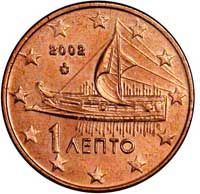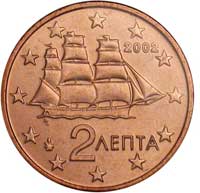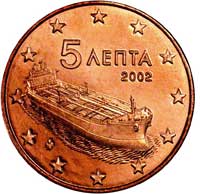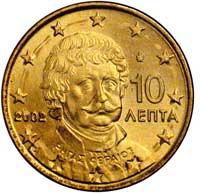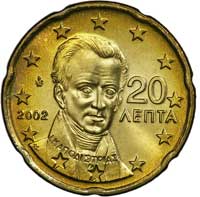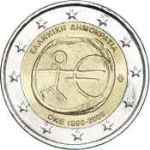| |||||||||||||||||||||||||||||||||
General data
Devenue romaine après la défaite de Philippe V de Macédoine, la Grèce suivra la destinée de l’Empire d’Orient, devenu byzantin après la coupure définitive de 395 (mort de Théodose 1er). Dans cet Empire, les Grecs vont subir les crises religieuses (le grand schisme, l’iconoclasme), et le joug latin après la 4ème Croisade (Empire latin de Thessalonique). Sous les Paléologues byzantins, la principauté de Morée (Péloponnèse) brille de tous ses feux artistiques à Mistra. Après 1453, la Grèce va peu à peu tomber dans les mains ottomanes. Seule la Crète résistera jusqu’en 1669. L’orthodoxie demeure bien vivante, et les privilèges de l’Eglise sont maintenus. Le Patriarche réside à Istanbul, dans le quartier du Phanar, avec un grand pouvoir vis-à-vis de ses compatriotes. L’idée d’indépendance se fait très forte dès la fin du 18ème siècle, avec le poète Constantin Rhigas, exécuté par les Turcs en 1798, inspiré par les idéaux de la Révolution française. La guerre d’indépendance éclate en 1821, et aboutit à une répression turque épouvantable (massacres de Chio) jusqu’en 1827. Mais les puissances occidentales et la Russie se soucient de la Grèce. Les troupes françaises occupent la Morée, la Russie intervient. Au Traité d’Andrinople, puis à la convention de Londres en 1830, la Grèce devient une principauté autonome, que dirige Capodistria jusqu’à son assassinat en 1831. Otton de Bavière, puis Georges de Danemark, deviennent rois de Grèce. La Grèce s’étend dans les îles, puis de façon significative en 1913 vers le nord à la suite des guerres balkaniques. La Grèce, paralysée entre un roi (Constantin 1er, beau frère de l’empereur Guillaume II) germanophile et Venizélos, reste neutre. En 1917, la Grèce étant occupée par les troupes françaises, le roi doit abdiquer en faveur de son fils Alexandre, et Venizélos prend le pouvoir et entre en guerre. Grande bénéficiaire du Traité de Neuilly, la Grèce se voit reconnaître la Thrace jusqu’à Istanbul, et toute la région de Smyrne. Ceci entraîne la guerre avec la Turquie kémaliste, et une totale défaite, concrétisée par le Traité de Lausanne (24 juillet 1923). 1 400 000 Grecs sont « échangés » contre 400 000 Turcs… Un drame terrible. La politique grecque est très confuse durant l’après-guerre, avec les aller-retour des rois (Alexandre, Constantin 1er, Georges II), une période républicaine de 1924 à 1935, la dictature de fait de Metaxas de 1936 à 1941. Attaquée dès 1940 par l’Italie, la Grèce lui inflige de lourdes défaites. Les armées allemandes occupent très vite le pays en 1941, et la Thrace est attribuée à l’allié bulgare Boris III, lequel, pour donner des gages à l’Allemagne, livre la quasi-totalité des Juifs de Thessalonique, déportés à Auschwitz, alors que lui-même protège ses populations juives. A la fin de la guerre, Staline et Churchill conviennent de laisser la Grèce sous influence occidentale. Le roi Paul (1947-64) ancre le pays à l’ouest. Mais son fils Constantin II sera renversé en 1967 par le coup d’état des « colonels », et quittera le pays, devenu république en 1973. Le régime dictatorial sera un des pires de l’Europe du Sud. Largement discrédité, il tentera de se remettre en selle par le coup d’état à Chypre en Juillet 1974 pour obtenir l’enosis (union de Chypre et de la Grèce, refusée par Mgr Makarios, président chypriote). Cette tentative entraîne l’invasion turque de Chypre et le régime s’effondre le 23 juillet 1974. La démocratie rétablie, la Grèce se veut résolument européenne. La Grèce est entrée dans la CEE (UE), 10ème membre, le 1er Janvier 1981.
Langue indo-européenne aux très antiques prédécesseurs (Linéaire A et B), le Grec et son alphabet a profondément influencé le latin. Greece and the Euro Candidate from the first day to the Euro, Greece will be the only country with Sweden not to be qualified in 1999.
The name of the country does not appear on the Greek circulating €coins except on the edge of the €2 coins. As Austria, Greece indicated the facial value of the coins on the national side whereas that is proscribed by the recommendations of article 3 of the Official Journal of the European Commission n°2009/23/CE, but Greece profited from an exemption because of its atypical alphabet. The Greek coins all are different: The small coins evoke the maritime vocation of Greece. - 1 cent: the ancient triremeThe yellow coins undoubtedly have less immediate meaning out of Greece, because they directly relate to the history of the regained independence in the 1830’s: - 10 cent: Constantin Rhigas Vélestinlis (1757-98), famous figure of the Greek revival, who died as a martyrLastly, the bimetallic coins:
Grammar The words “euro” and “cent” are invariable in Europe on the coins and the banknotes, and Greece needed to add the words ΛEΠTO (lepto = centime) on the 1 cent coin, ΛEΠTA (lepta = centimes, the plural of lepto) on the 2 to 50 cents coins, and EYPΩ (evro = euro) for the bi-metallic coins. €2 commemorative coins In 2004, Greece is the first country to issue one €2 commemorative coin, at the time of the OG of Athens. Taking into account the delay in the issue of this coin, Luxemburg nearly missed to take the first place! It should be specified that for this first commemorative coin, an exemption was written. Indeed, it had been envisaged at the beginning that the commemorative coins could not be put into circulation before 2008. The reason was that it was necessary for the population living in the Euro area to have time to get used to the national sides of the various countries. But the European currency was very quickly adopted and the theme of the OG was a completely honourable one for a first commemorative coin. After this first commemorative coin, dead calm for Greece, it will be necessary to await the common issue of the €2 coin relating to the Treaty of Rome in 2007 to see the second one. Greece is used not to mint €2 current coin when it proposes a €2 commemorative coin, as a result, the only means of getting them is to acquire the BU sets whose quotation climbs quickly. Greece issued many non-circulating commemorative coins and UNC sets, some of them containing medals.
The country letter of the Greek banknotes is Y, in exemption with the rule of attribution, in order to have a capital letter identical to its alphabet. Contact E-mail: pays@amisdeleuro.org Links - the website of the Bank of Greece: http://www.bankofgreece.gr/ | |||||||||||||||||||||||||||||||||
 AD€ - Les Amis de l'Euro
AD€ - Les Amis de l'Euro

